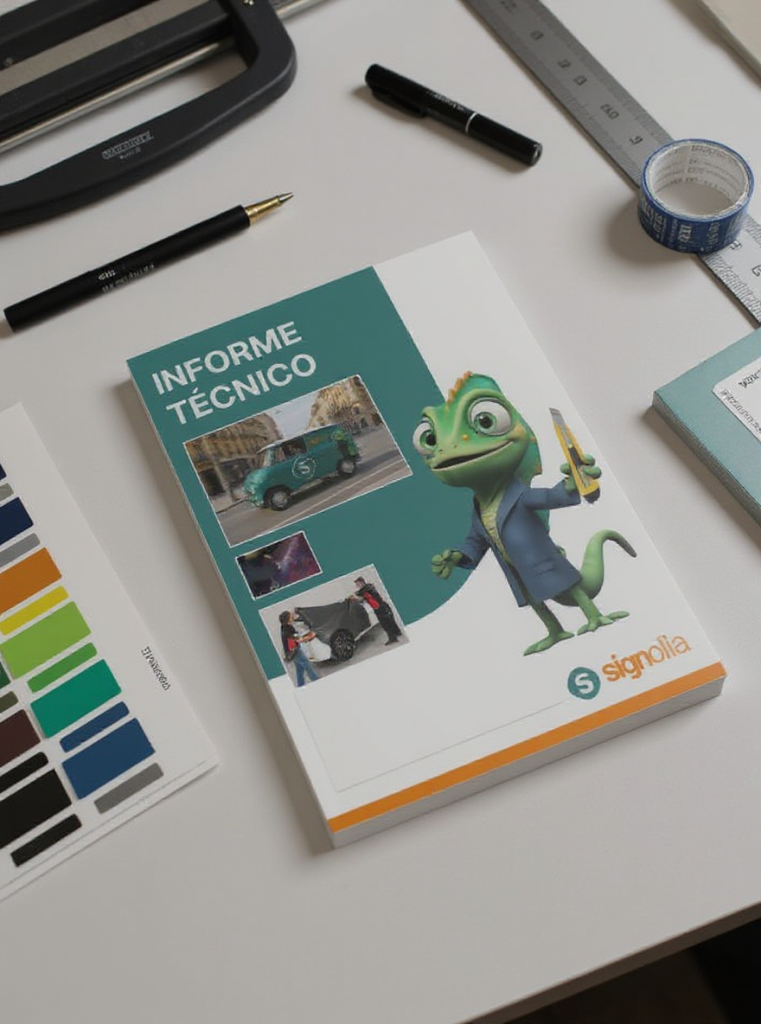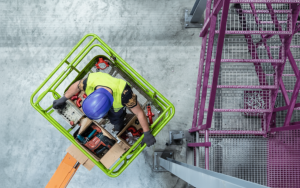
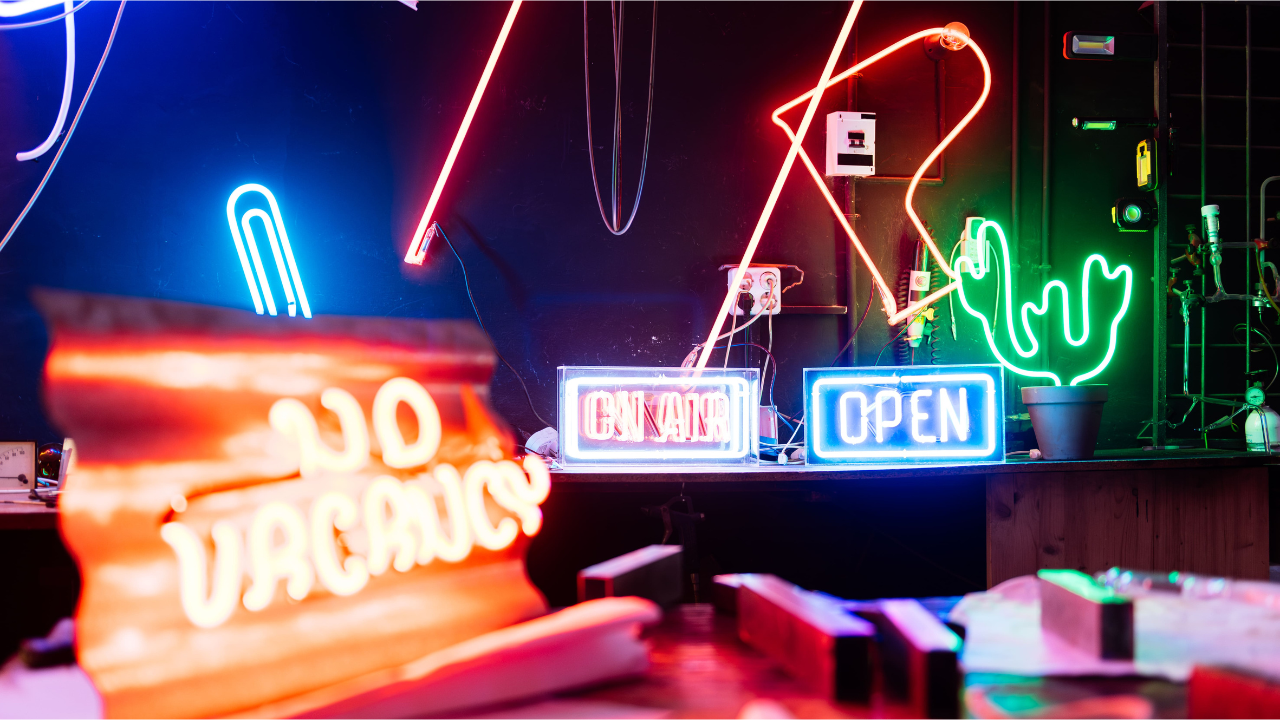

Do you want to find out quickly? Listen here to a mini-podcast summary of this technical study.
For decades, neon lights have been very relevant. Its bright colors and designs were an ornament for bars, cinemas and all kinds of shops, becoming a modern symbol. Today, that same aesthetic is still present, but with a more current technology: LED, a more modern and efficient technology that has managed to maintain that characteristic visual style, LED neon has taken over maintaining the style, but improved.
In this article we tell you the history of this change, from the classic neon lights to the LED strips that now illuminate all kinds of spaces.
Neon lighting began in 1910, when the French engineer Georges Claude He created the first neon lamp. He used a glass tube with neon gas and applied electricity to produce a bright red light. His invention was first presented in Paris and attracted a lot of attention.
In 1923, Claude sold the first neon signs in Los Angeles, and from there began his expansion. Soon the illuminated signs were everywhere: streets, shops, cinemas... During the 1920s and 1930s, neon became part of the landscape of many cities. Over time, the technology was improved so that neon would last longer and offer more colors.
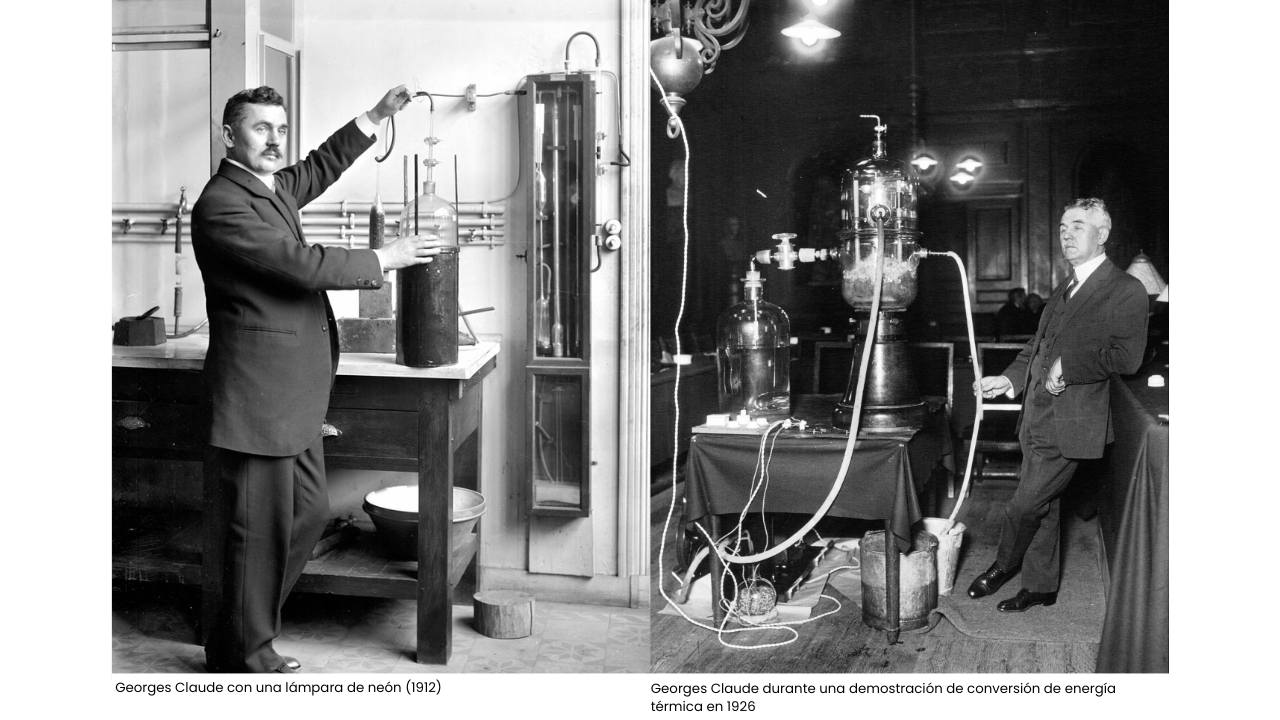
Although it may seem like a modern technology, the origins of LED begin at the beginning of the twentieth century. In 1907, engineer Henry Joseph Round first observed a phenomenon called electroluminescence, but it wasn't until 1927 that the Russian Oleg Losev created the first LED. At the time, it was not seen to be put to practical use and went largely unnoticed.
The real breakthrough came in 1962, when Nick Holonyak developed the first visible LED, which emitted a red light. From there, technology improved: in the 70s there were already yellow LEDs, brighter and adapted for technical applications such as telecommunications.
The big change came in 1994, with the invention of the high-brightness blue LED. Thanks to that, it was possible to create white light by combining blue with yellow, or using red, green and blue LEDs. From that moment on, LEDs began to be used for general lighting.
Today, LEDs are highly efficient, durable, and sustainable. They are used in all kinds of products, from lamps to lampshades to decorations, and their performance continues to improve. It is a clear example of how a technology can evolve from something experimental to being part of our daily lives.
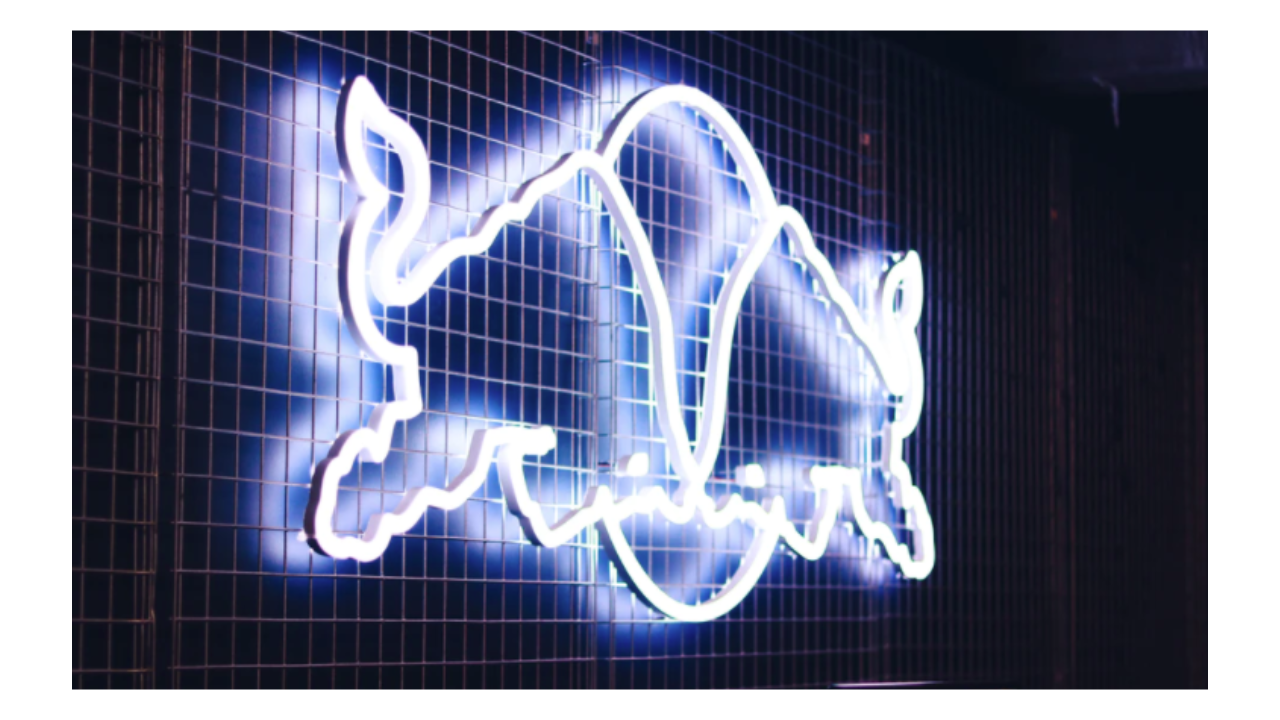
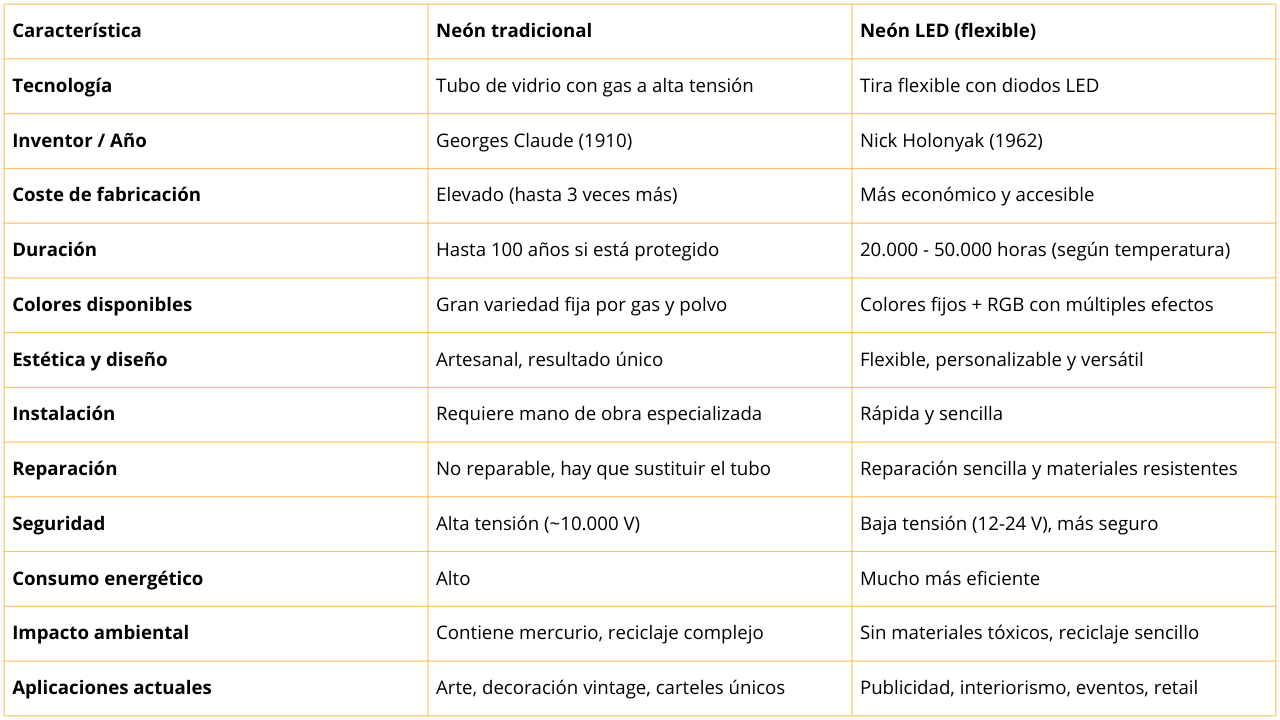
Although LED dominates the market today, classic neon still has its place. There are museums dedicated to preserving these posters, such as the Neon Museum in Las Vegas , and contemporary artists who continue to work with neon to create unique works. Its aesthetics still have cultural and artistic value, and many designers combine it with LEDs to maintain the visual essence with current technical advantages.

The move from neon to LED is a good example of how technology can maintain the same aesthetics as always, but with significant improvements in efficiency, safety and ease of use. Neon and LED lights coexist in many spaces today, although LED has become the preferred choice for those looking for attractive visual results without complications. It is a logical evolution that allows us to continue creating striking environments, but in a more practical way.
